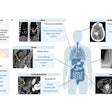
Primary care physician (PCP) services and referrals account for a small minority of spending on low-value care such as imaging for nonspecific back pain, according to a January 19 study in the Annals of Internal Medicine.
Spending on low-value healthcare services is estimated to cost healthcare systems $75 billion to $100 billion annually. But how much of that spending is directly related to services and referral decisions by primary care physicians?
A research team led by Aaron Baum, PhD, from the American Board of Family Medicine and Mount Sinai, along with colleagues at Harvard and Stanford universities, started with a set of 31 services previously classified as low-value by national physician societies, Medicare criteria, and clinical guidelines.
The group then analyzed Medicare Part B claims between 2007 and 2014 to estimate the share of Medicare beneficiaries' low-value spending that was directly related to services or referrals from primary care physicians.
It turns out that PCP contributions made up a relatively small portion of the low-value expenditures -- services primary care doctors performed or ordered accounted for less than 9% of patients' low-value spending, and services they referred accounted for a median of 15.4% of spending on low-value services.
| Share of spending on low-value imaging services, by physician referral type | ||||
| Performed or ordered by PCP | Referred by PCP | Referred Previously by PCP | Referred by non-PCP | |
| Back imaging for nonspecific low back pain | 23% | 6% | 2% | 69% |
| Head imaging for uncomplicated headache | 29% | 2% | 1% | 68% |
| Preoperative chest radiography | 30% | 2% | 1% | 68% |
| Head imaging in the evaluation of syncope | 23% | 2% | 1% | 75% |
| CT of the sinuses for uncomplicated acute rhinosinusitis | 17% | 8% | 4% | 71% |
| Imaging for the diagnosis of plantar fasciitis | 2% | 21% | 4% | 74% |
| Total spending on low-value services (including nonimaging) | 15% | 20% | 6% | 60% |
The medical specialties that accounted for the largest share of low-value spending were cardiology (27.3%), primary care (14.5%), ambulatory surgical centers (8.9%), internal medicine (7%), and orthopedic surgery (4.9%).
For future research, Baum et al recommended studies on practice patterns of primary care physicians who are outliers from the norm in terms of spending on low-value services. Studies could also investigate referral tools and payment strategies to help primary doctors manage low-value care, as well as methods for minimizing the difficulty of measuring the burden of low-value care in the primary area.



















